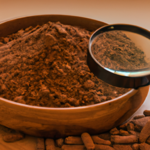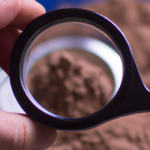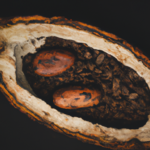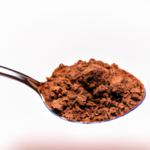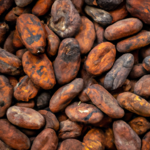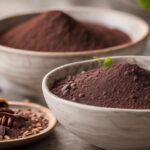Raw Food Ingredients
How Much Magnesium In Raw Cacao
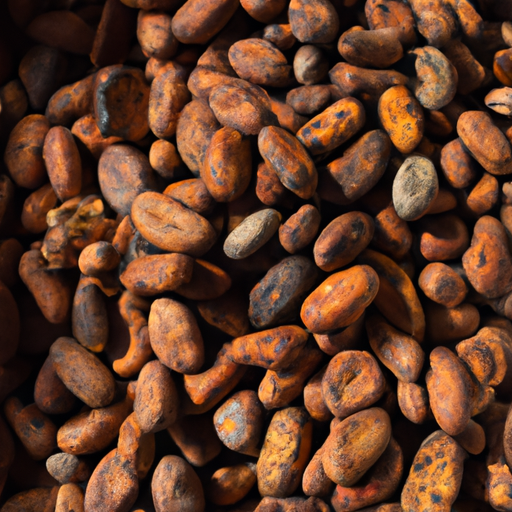
I have always had an interest in the nutritional value of different foods, and one question that has been on my mind recently is the amount of magnesium found in raw cacao.
Magnesium is an essential mineral that plays a crucial role in our overall health and well-being. It is involved in hundreds of biochemical reactions in the body, including energy production, muscle function, and bone health.
Understanding the magnesium content in raw cacao can help us make informed choices about incorporating it into our diet.
In this article, we will explore the nutritional benefits of raw cacao, delve into the importance of magnesium for our health, and uncover the exact amount of magnesium found in raw cacao.
We will also discuss the various health benefits of consuming magnesium-rich raw cacao and provide tips on how to incorporate it into our diet.
So, let’s dive in and discover the wonders of magnesium-rich raw cacao!
Key Takeaways
- Raw cacao is a good source of magnesium.
- Consuming raw cacao can contribute to improved heart health, reduced risk of diabetes, and enhanced bone health.
- The recommended daily intake of magnesium is around 400-420 mg for men and 310-320 mg for women.
- Excessive intake of magnesium from raw cacao can lead to side effects such as diarrhea, nausea, and stomach cramps.
The Nutritional Benefits of Raw Cacao
You’ll be pleasantly surprised by the nutritional benefits of raw cacao. It contains a significant amount of magnesium, which is essential for muscle function and overall heart health.
Magnesium plays a vital role in our bodies. It helps regulate blood pressure, maintain normal heart rhythm, and support proper muscle and nerve function.
Understanding magnesium’s role is crucial. It is involved in over 300 enzymatic reactions in the body. Despite its importance, many people are deficient in magnesium. This deficiency can lead to various health issues such as muscle cramps, fatigue, and even heart problems.
Incorporating raw cacao into your diet is a delicious way to increase your magnesium intake and support your overall health. Understanding the impact of magnesium deficiency highlights the importance of including magnesium-rich foods like raw cacao in our daily lives.
Understanding Magnesium’s Importance in Our Health
Understanding magnesium’s importance in our health is crucial. Magnesium is involved in over 300 biochemical reactions in our bodies, including energy production, muscle and nerve function, and DNA synthesis. Unfortunately, magnesium deficiency is a common problem, with an estimated 75% of adults not meeting the recommended daily magnesium intake. This deficiency can lead to various health issues, such as muscle cramps, fatigue, and even heart problems.
Therefore, it is important to ensure we consume enough magnesium through our diet. One excellent source of magnesium is raw cacao. This superfood contains a significant amount of magnesium, making it a great addition to our diet.
In the next section, let’s explore the magnesium content in raw cacao and its benefits for our health.
Magnesium Content in Raw Cacao
The average magnesium content in raw cacao is an important factor to consider when assessing its health benefits. According to research, raw cacao contains approximately 64 milligrams of magnesium per 100 grams.
However, it’s important to note that the magnesium levels in cacao beans can vary based on factors such as the soil quality, growing conditions, and processing methods.
The average magnesium content in raw cacao
Get ready to be amazed by the abundant magnesium found in raw cacao!
Raw cacao is a rich source of magnesium, an essential mineral that plays a crucial role in various bodily functions.
The average magnesium content in raw cacao is around 64 milligrams per 100 grams. However, it is important to note that the processing of cacao beans can have an impact on the magnesium levels.
Roasting, for example, can reduce the magnesium content by up to 60%.
To meet the recommended daily intake of magnesium, which is around 400-420 milligrams for adult men and 310-320 milligrams for adult women, incorporating raw cacao into your diet can be beneficial.
Factors that can affect the magnesium levels in cacao beans will be discussed in the subsequent section.
Factors that can affect the magnesium levels in cacao beans
There are several factors that can affect the magnesium content in cacao beans. These factors include the variety of the cacao tree, the soil composition in which the cacao tree is grown, the climate conditions during the growth of the cacao beans, and the harvesting and processing methods used.
Each of these factors can have an impact on the magnesium levels in cacao beans. For example, cacao beans grown in magnesium-rich soil may have higher magnesium content compared to those grown in magnesium-deficient soil. Additionally, the processing methods, such as fermentation and roasting, can also affect the magnesium levels in cacao beans.
Understanding these factors can help us better appreciate the variations in magnesium content in raw cacao.
Moving forward, let’s explore the health benefits of consuming magnesium-rich raw cacao.
Health Benefits of Consuming Magnesium-Rich Raw Cacao
Indulging in raw cacao can significantly boost your magnesium intake, ensuring that you receive the numerous health benefits associated with this essential mineral. Magnesium is a vital nutrient that plays a crucial role in various bodily functions, including muscle and nerve function, blood sugar regulation, and blood pressure control. Incorporating magnesium-rich foods like raw cacao into your diet can contribute to overall well-being.
Here are some benefits of consuming magnesium-rich raw cacao:
| Reduces stress | Improves mood |
| Enhances energy | Supports digestion |
| Promotes heart health | Strengthens bones |
Magnesium is an important mineral that is often lacking in our diets. By incorporating raw cacao into your meals or snacks, you can easily increase your magnesium intake and enjoy these health benefits.
Now, let’s explore how to incorporate raw cacao into your diet to maximize its benefits without missing out on its rich magnesium content.
Incorporating Raw Cacao into Your Diet
When it comes to incorporating raw cacao into my diet, I’ve found various ways to enjoy its benefits.
- Adding it to smoothies and oatmeal
- Using it as a topping for yogurt and fruit bowls
There are endless possibilities.
- Discovering delicious recipes that include raw cacao, such as energy balls, brownies, and homemade chocolate bars
By exploring these different options, I’ve been able to effortlessly incorporate raw cacao into my meals and snacks, while reaping its numerous health benefits.
Different ways to consume raw cacao
One of the tastiest ways to enjoy raw cacao is by blending it into a smoothie. Here are five different ways to prepare raw cacao and the benefits of adding it to smoothies:
- Mix raw cacao powder with almond milk, a frozen banana, and a handful of spinach for a nutrient-packed green smoothie.
- Combine raw cacao nibs, dates, almond butter, and coconut water for a rich and creamy chocolate smoothie.
- Blend raw cacao powder with frozen berries, Greek yogurt, and a splash of honey for a deliciously fruity smoothie.
- Add raw cacao powder to a smoothie made with avocado, spinach, and almond milk for a creamy and nutritious treat.
- Mix raw cacao powder with frozen cherries, cashew milk, and a scoop of protein powder to create a post-workout recovery smoothie.
Incorporating raw cacao into smoothies is a great way to boost your magnesium intake and enjoy the rich flavor of chocolate.
Next, we will explore recipes and ideas for incorporating raw cacao into meals and snacks.
Recipes and ideas for incorporating raw cacao into meals and snacks
Get ready to tantalize your taste buds with these mouthwatering recipes and creative ideas for adding the irresistible richness of raw cacao into your meals and snacks. Raw cacao can be a versatile ingredient that adds a deep, intense chocolate flavor to a variety of dishes. From breakfast to dessert, there are endless possibilities to explore. Here are some recipe ideas to get you started:
| Recipe | Description |
|---|---|
| Raw Cacao Smoothie Bowl | Blend frozen bananas, almond milk, and raw cacao for a creamy, |
| nutrient-packed breakfast bowl. Top with fresh fruit and granola. | |
| Raw Cacao Energy Bites | Combine dates, nuts, and raw cacao in a food processor, then roll |
| into bite-sized balls for a healthy and satisfying snack. | |
| Raw Cacao Avocado Pudding | Blend ripe avocados, raw cacao, honey, and almond milk for a |
| smooth and indulgent dessert. | |
| Raw Cacao Chia Pudding | Mix chia seeds, almond milk, raw cacao, and sweetener of choice. |
| Let it sit overnight for a nutritious and delicious breakfast. |
Incorporating raw cacao into your meals and snacks not only adds a rich chocolate flavor, but also provides a good source of magnesium. However, there are other sources of magnesium in a balanced diet that can complement your raw cacao recipes.
Other Sources of Magnesium in a Balanced Diet
To ensure you meet your daily magnesium needs, incorporate various sources of this essential mineral into your balanced diet, such as raw cacao.
Magnesium is an important mineral that plays a crucial role in many bodily functions, including energy production, muscle contraction, and nerve function. Consuming foods rich in magnesium can provide numerous health benefits, such as improved heart health, reduced risk of diabetes, and enhanced bone health.
The recommended daily intake of magnesium for adults is around 400-420 mg for men and 310-320 mg for women.
In addition to raw cacao, other good sources of magnesium include leafy green vegetables, nuts and seeds, whole grains, and legumes. These foods can easily be incorporated into meals and snacks to help you meet your daily magnesium needs.
Transitioning into the next section about potential risks and considerations, it is important to note that while magnesium is essential for overall health, consuming excessive amounts may lead to adverse effects.
Potential Risks and Considerations
When it comes to consuming magnesium, it’s important to be aware of the potential risks and considerations.
Consuming too much magnesium can lead to side effects such as diarrhea, nausea, and stomach cramps.
Additionally, individuals with certain medical conditions, such as kidney disease or heart disease, should take precautions and consult with their healthcare provider before increasing their magnesium intake.
Possible side effects of consuming too much magnesium
Excessive intake of magnesium can lead to potential side effects, making it essential to be mindful of the amount consumed. While magnesium is an important mineral for our health, consuming too much can cause certain adverse effects. Here are three possible side effects of consuming excessive amounts of magnesium:
-
Digestive Issues: Consuming too much magnesium can result in diarrhea, nausea, and stomach cramps. These symptoms usually occur when the body is unable to absorb the excess magnesium, leading to an imbalance in the digestive system.
-
Low Blood Pressure: Excessive magnesium intake can cause a drop in blood pressure, leading to dizziness and lightheadedness. This can be particularly concerning for individuals already dealing with low blood pressure or taking medications to control hypertension.
-
Muscle Weakness: In some cases, consuming too much magnesium can cause muscle weakness and fatigue. This can interfere with daily activities and affect overall physical performance.
It is important to be aware of these potential side effects and consume magnesium in moderation. Moving on to precautions for individuals with certain medical conditions…
Precautions for individuals with certain medical conditions
Despite the potential benefits of magnesium, it’s important for individuals with certain medical conditions to exercise caution when consuming it. Proper dosage is crucial, as excessive magnesium intake can lead to adverse effects for some people.
Individuals with kidney problems, heart conditions, or gastrointestinal disorders should consult their healthcare provider before adding magnesium-rich foods, like raw cacao, to their diet. This is because these medical conditions can affect magnesium absorption and metabolism, potentially leading to imbalances.
Additionally, magnesium can interact with certain medications, such as antibiotics, diuretics, and blood pressure medications. These interactions can affect the effectiveness of the medications or cause unwanted side effects. It’s always best to consult with a healthcare professional to determine the appropriate dosage and ensure there are no potential interactions.
With these precautions in mind, let’s move on to tips for choosing and storing raw cacao.
Tips for Choosing and Storing Raw Cacao
To ensure the best quality, storing raw cacao in an airtight container will preserve its rich flavor and aroma. When choosing raw cacao, it’s important to look for high-quality products that are minimally processed and free from additives. Additionally, considering the source and processing methods can help ensure freshness and maintain the beneficial nutrients. Once you have your raw cacao, proper storage is essential to maintain its quality. Keep it in a cool, dry place away from direct sunlight, as exposure to heat and light can degrade its flavor and nutritional value. Below is a helpful table to guide you in selecting and storing raw cacao:
| Choosing Quality | Storing Freshness |
|---|---|
| Look for | Store in an |
| high-quality | airtight container |
| products | in a cool, dry |
| that are | place away from |
| minimally | direct sunlight |
| processed |
By following these tips, you can enjoy the benefits of magnesium-rich raw cacao in various recipes without compromising its freshness.
Conclusion: Enjoying the Benefits of Magnesium-Rich Raw Cacao
Indulge in the heavenly richness of raw cacao and savor the countless benefits it brings to your taste buds and well-being! Raw cacao is not only delicious but also packed with magnesium, a mineral that plays a vital role in various bodily functions. By enjoying magnesium-rich desserts made with raw cacao, you can not only satisfy your sweet tooth but also support your overall health.
Incorporating raw cacao into your diet is easy and versatile. Here are a few ideas to help you enjoy the benefits of magnesium-rich raw cacao:
- Add a spoonful of raw cacao powder to your morning smoothie for a delicious and nutritious boost.
- Use raw cacao nibs as a topping for yogurt or oatmeal to add a rich chocolate flavor.
- Get creative in the kitchen and experiment with raw cacao in your favorite dessert recipes, like brownies or energy balls.
So go ahead and treat yourself to the goodness of raw cacao, and reap the benefits of its magnesium content for a happier and healthier you!
Frequently Asked Questions
Can consuming raw cacao help improve sleep quality?
Consuming raw cacao can potentially improve sleep quality due to its high magnesium content. Magnesium helps regulate neurotransmitters that promote relaxation and enhance sleep. Additionally, it can have a positive impact on overall health.
Is there a recommended daily intake of magnesium for adults?
There is a recommended daily intake of magnesium for adults, which varies based on age and gender. Magnesium is essential for various bodily functions and has numerous health benefits, including improving sleep quality.
How does the magnesium content in raw cacao compare to other magnesium-rich foods?
Magnesium-rich foods provide numerous benefits for our health. They help in maintaining healthy bones, regulating blood pressure, and supporting muscle function. Including magnesium-rich foods in our diet is essential for overall well-being.
Can consuming raw cacao help reduce muscle cramps and spasms?
Consuming raw cacao can potentially reduce muscle cramps and spasms due to its high magnesium content. It may also enhance athletic performance. However, it’s important to note that individual results may vary and more research is needed to fully understand these effects.
Can consuming raw cacao help alleviate symptoms of migraines?
Yes, consuming raw cacao can help alleviate symptoms of migraines. Raw cacao is rich in magnesium, which has been shown to reduce the frequency and intensity of migraines. It can also improve sleep quality, further aiding in migraine relief.
What is the Magnesium Content in Raw Cacao and How Much is in a Specific Serving Size?
Raw cacao is a rich source of magnesium, with a serving size of 28 grams providing around 64 milligrams of the mineral. Magnesium content in raw cacao is beneficial for muscle function, energy production, and overall heart health. Including raw cacao in your diet can help meet your daily magnesium needs.
Conclusion
In conclusion, incorporating magnesium-rich raw cacao into your diet can be a delicious and beneficial choice.
Raw cacao is high in magnesium, which supports various aspects of our health. It can promote heart and bone health, as well as regulate mood.
By consuming raw cacao, you are giving your body a warm hug packed with essential nutrients that contribute to overall well-being.
To fully enjoy the benefits of raw cacao, make sure to choose high-quality products and store them properly to maintain their freshness.
So go ahead and indulge in the velvety goodness of raw cacao while reaping its numerous health benefits.
Rachael, the Editor in Chief of RachaelsRawFood.com, is an inspiring and passionate individual who has dedicated her life to promoting the benefits of a raw food lifestyle. Known for her vibrant and energetic personality, Rachael has built a strong online presence that has transformed her personal journey into a thriving community of raw food enthusiasts.
Raw Food Ingredients
How Much Caffeine in Cocoa?
Not all cocoa products are created equal when it comes to caffeine content – discover which one might surprise you!

When evaluating the caffeine levels in cocoa, it’s important to recognize that dark chocolate contains around 43 mg of caffeine per 100 grams due to its high cocoa solid content. Dark chocolate has a higher caffeine content compared to milk or white chocolate. This means that consuming dark chocolate in moderation can assist in managing your caffeine intake. On the other hand, milk chocolate has around 20 mg of caffeine per 100 grams while white chocolate is caffeine-free. Cocoa powder, commonly used in baking and beverages, contains a substantial 230 mg of caffeine per 100 grams. Being aware of these distinctions in chocolates can help you make informed decisions about your caffeine consumption.
Key Takeaways
- Caffeine content in cocoa varies based on cocoa solid concentrations.
- Unsweetened cocoa powder can contain around 230 mg of caffeine per 100 grams.
- Roasting cocoa solids influences the final caffeine content in cocoa products.
- Dark chocolate, with high cocoa solid content, has more caffeine than milk chocolate.
- Moderate consumption of cocoa products helps manage caffeine intake.
Caffeine Content in Dark Chocolate
Dark chocolate boasts a caffeine content of approximately 43 mg per 100 grams, mainly deriving from its higher cocoa solid composition. When we indulge in this decadent treat, we aren't only savoring its rich cocoa flavor but also a subtle caffeine kick. Compared to milk or white chocolate, dark chocolate contains a higher amount of caffeine.
Please bear in mind that moderate consumption of dark chocolate can assist individuals in managing their caffeine intake effectively. The caffeine levels in dark chocolate are about one-fourth of what you'd find in a standard cup of coffee. So, if you're looking for a milder caffeine boost, a piece of dark chocolate might just do the trick without the jitters that sometimes accompany a strong cup of coffee.
Enjoy your dark chocolate in moderation, savoring both its taste and the gentle pick-me-up it provides.
Caffeine Levels in Milk Chocolate

Milk chocolate, known for its creamy texture and sweet flavor, contains a modest caffeine content of approximately 5.6 mg per ounce, as indicated by USDA data. Unlike dark chocolate, milk chocolate has a lighter color due to lower cocoa content, resulting in reduced caffeine levels.
The delightful creamy taste in milk chocolate comes from a harmonious blend of cocoa and milk powder. While dark chocolate boasts higher caffeine content, milk chocolate remains a popular choice for those seeking a sweet treat with minimal caffeine intake.
Caffeine Presence in White Chocolate
With its unique composition excluding cocoa solids, white chocolate stands out as a caffeine-free alternative to its darker counterparts. White chocolate is crafted from a blend of cocoa butter, milk powder, sugar, and vanilla, making it a delectable treat without the stimulating effects of caffeine. For individuals sensitive to caffeine, white chocolate offers a creamy texture and indulgent flavor without the worry of unwanted side effects. This makes it a popular choice for desserts among those looking to steer clear of caffeine in their sweet treats.
Compared to dark chocolate, which contains cocoa solids and hence caffeine, white chocolate provides a caffeine-free option for those seeking a more mellow indulgence. So, if you're in the mood for a luscious and smooth chocolate experience without the buzz of caffeine, white chocolate is the perfect choice for your next dessert delight.
Impact of Cocoa Solids on Caffeine

In determining the caffeine levels in cocoa products, the percentage of cocoa solids plays a significant role. Here are some key points about the impact of cocoa solids on caffeine content:
- Caffeine Derivation: The caffeine content in cocoa primarily comes from cocoa solids, making it an important factor in determining the overall caffeine levels in cocoa-based products.
- Dark Chocolate: Dark chocolate, known for its higher cocoa solid content, tends to contain more caffeine compared to milk or white chocolate varieties due to this higher concentration.
- Unsweetened Cocoa Powder: A 100g serving of unsweetened cocoa powder can contain around 230mg of caffeine, reflecting the impact of the high cocoa solid content in this form.
- Health Benefits: The roasting process of cocoa solids not only affects the flavor profile but also influences the caffeine content, contributing to the potential health benefits associated with consuming cocoa products like hot cocoa.
Comparing Caffeine in Different Chocolates
Comparing the caffeine content in different chocolates reveals varying levels based on their cocoa solid concentrations. Dark chocolate contains about 43 mg of caffeine per 100 grams, making it a stronger caffeinated option compared to milk chocolate, which only has around 20 mg per 100 grams.
Surprisingly, white chocolate, derived from cocoa butter, doesn't contain any caffeine at all. For those seeking a more potent caffeine kick, cocoa powder is the way to go, boasting a high concentration of 230 mg per 100 grams.
The amount of caffeine in chocolate products is closely linked to the cocoa solid content, with dark chocolate containing the highest levels. So, the next time you're craving a chocolate treat but also need a little energy boost, opt for dark chocolate to get the most caffeine per bite.
Frequently Asked Questions
Is There More Caffeine in Cocoa Than Coffee?
There's more caffeine in cocoa than in coffee. Cocoa powder packs 230 mg per 100 grams, surpassing most coffee varieties. Dark chocolate has even more caffeine due to higher cocoa content. It's a rich, unique energy source.
Is There a Lot of Caffeine in Hot Cocoa?
There isn't a lot of caffeine in hot cocoa. It depends on the brand and recipe. Starbucks hot chocolate has around 25 mg per serving, while basic mixes have about 5 mg. The amount of cocoa powder used influences the caffeine content.
Is There Caffeine in Hershey's Cocoa?
Absolutely, Hershey's Cocoa does contain caffeine, but it's not overwhelming. It adds a delightful hint of energy in each spoonful. Perfect for baking or a cozy cup of hot chocolate. Just the right amount!
Is Cocoa a Stimulant Like Caffeine?
Cocoa stimulates like caffeine due to its theobromine content. Decaf versions offer a solution for caffeine-sensitive folks. Options include regular cocoa with caffeine, Dutch-processed cocoa with less, and decaf cocoa with reduced caffeine while keeping healthful compounds.
What are the potential health effects of consuming high levels of caffeine in cocoa?
Unveiling cocoa caffeine levels can lead to potential health effects of excessive consumption. High levels of caffeine in cocoa may contribute to insomnia, nervousness, and fast heartbeat. It can also cause gastrointestinal discomfort and exacerbate anxiety disorders. Moderation in consuming caffeinated cocoa products is recommended for overall health.
Conclusion
To sum up, the caffeine content in cocoa varies depending on the type of chocolate. Dark chocolate typically has the highest caffeine levels, followed by milk chocolate and white chocolate. The amount of cocoa solids in the chocolate also affects the caffeine content.
Remember, just like different chocolates have different levels of caffeine, we all have unique strengths and abilities. Embrace your individuality and always aim for balance in everything you do.
Rachael, the Editor in Chief of RachaelsRawFood.com, is an inspiring and passionate individual who has dedicated her life to promoting the benefits of a raw food lifestyle. Known for her vibrant and energetic personality, Rachael has built a strong online presence that has transformed her personal journey into a thriving community of raw food enthusiasts.
Raw Food Ingredients
5 Key Differences: Caffeine Content in Cocoa Vs Coffee
Open the door to understanding the contrasting caffeine levels in cocoa and coffee, revealing surprising insights that will reshape your beverage choices.

When comparing the caffeine levels in cocoa and coffee, it is important to understand that cocoa generally has lower caffeine content than coffee. Dark chocolate contains approximately 12 milligrams of caffeine per ounce, while hot cocoa typically ranges from 5 to 10 milligrams per ounce. In contrast, brewed coffee can have significantly higher levels, varying from 95 to 165 milligrams per 8-ounce cup.
Cocoa is considered a milder option for individuals aiming to limit their caffeine intake, with theobromine providing a gradual energy increase. Meanwhile, coffee's caffeine content offers immediate alertness, and understanding these distinctions can help you select based on your preferred effects.
Key Takeaways
- Cocoa contains lower caffeine levels but compensates with theobromine for a gradual energy increase.
- Coffee has higher caffeine content, offering an immediate alertness boost and potentially higher metabolic rate.
- Theobromine in cocoa promotes relaxation, while caffeine in coffee provides intense alertness and mood fluctuations.
- Hot chocolate is a good option for reducing caffeine intake while still benefiting from theobromine effects.
- Understanding caffeine variances helps make informed choices for desired energy levels and mood effects.
Caffeine Levels in Cocoa Vs Coffee
When comparing caffeine levels in cocoa versus coffee, it's evident that cocoa generally contains lower amounts per serving. Dark chocolate, made from cacao beans, contains around 12 milligrams of caffeine per ounce, while a 1-ounce serving of hot cocoa mix typically has 5-10 milligrams. Even a 16-ounce serving of Starbucks hot chocolate only contains about 25 milligrams of caffeine.
On the other hand, coffee, when brewed, can range from 95 to 165 milligrams of caffeine per 8-ounce cup, depending on the type and brewing method. This significant difference in caffeine content between cocoa and coffee makes cocoa a milder option for those looking to limit their caffeine intake.
Impact on Alertness and Energy

Typically, the immediate alertness and energy boost from caffeine in coffee can last for hours. This surge in alertness is due to caffeine's stimulating effect on the central nervous system. On the other hand, cocoa contains theobromine, which provides a more gradual increase in energy levels. Unlike caffeine, theobromine doesn't cause sudden spikes and crashes, offering a smoother energy curve.
Coffee's caffeine content can temporarily boost the metabolic rate, potentially supporting weight management efforts. This increased metabolic rate can aid in burning calories and may contribute to weight loss when combined with a balanced diet and regular exercise. Additionally, theobromine in cocoa contributes to the thermogenic effect, leading to mild calorie burning in the body.
Both caffeine and theobromine can influence mood. Caffeine tends to provide a more intense and quick-acting mood elevation, while theobromine promotes feelings of relaxation and contentment. Understanding the differences in alertness, energy, metabolic effects, and mood enhancements between cocoa and coffee can help individuals make informed choices based on their preferences and wellness goals.
Metabolic Variances and Effects
Regarding metabolic variances and effects, the varying caffeine levels between cocoa and coffee play a significant role. When comparing the metabolic impact of caffeine in cocoa and coffee, it is crucial to note that cocoa contains lower levels of caffeine but compensates with theobromine, which aids in the thermogenic effect, promoting calorie burning and metabolic activity. On the other hand, coffee, especially brewed varieties, contains higher levels of caffeine, potentially providing a temporary boost to the metabolic rate, which could assist in weight management. While caffeine in coffee offers a quick energy surge, theobromine in cocoa leads to a more gradual rise in energy levels, avoiding sudden spikes and crashes. To summarize the metabolic differences, I've created a table below:
| Aspect | Cocoa | Coffee |
|---|---|---|
| Caffeine Content | Lower levels | Higher levels |
| Additional Component | Theobromine | Caffeine |
| Metabolic Impact | Thermogenic effect | Temporary metabolic rate boost |
| Energy Levels | Gradual rise | Quick surge |
| Weight Management | Aids in calorie burning | Potential assistance |
Mood Enhancement Disparities

In comparing the mood enhancement effects of theobromine in cocoa and caffeine in coffee, notable disparities emerge in their impact on mental well-being.
The theobromine found in cocoa promotes relaxation and contentment, offering a gradual rise in energy levels that leads to a gentle and long-lasting mood enhancement experience.
On the other hand, caffeine delivers an intense and fast-acting boost in alertness, providing immediate energy levels that can lead to abrupt spikes and crashes.
While both theobromine and caffeine uplift mood, theobromine's effects are characterized by a steady and gradual increase in energy levels, creating a sense of calm and contentment.
In contrast, caffeine's impact is more intense and temporary, resulting in rapid alertness but also the potential for fluctuations in mood. Understanding these differences can help individuals choose between cocoa and coffee based on their desired mood enhancement effects.
Health Implications and Considerations
Health implications and considerations surrounding caffeine consumption warrant close attention due to its potential impact on various aspects of well-being. When comparing a cup of coffee to hot chocolate, it's vital to note the amount of caffeine present.
While coffee contains much caffeine, hot chocolate has less caffeine but isn't entirely devoid of it. The main active ingredients in hot chocolate are theobromine and caffeine, where theobromine is a relative of caffeine and also has stimulant effects, although milder. If you're looking to reduce your caffeine intake, opting for hot chocolate over a cup of coffee can be a good choice.
Being mindful of the caffeine content in chocolate products is important, especially if you're sensitive to caffeine or belong to vulnerable populations like children or pregnant women. Understanding the caffeine levels in different beverages allows you to make informed decisions about your consumption for better overall health.
Frequently Asked Questions
Is There Caffeine in Coffee Vs Cacao Powder?
Yes, there is caffeine in coffee, with around 140 milligrams in a 12-ounce cup. On the other hand, cacao powder contains only about 12 milligrams per tablespoon, making it a great caffeine-free alternative for those seeking a milder boost.
What Is the Difference Between Cocoa and Coffee?
When comparing cocoa and coffee, cocoa offers a rich, chocolatey flavor and is packed with antioxidants and minerals. Coffee, on the other hand, provides a robust, bitter taste and a jolt of caffeine for that morning pick-me-up.
Why Is Cocoa Better Than Coffee?
I believe cocoa is superior to coffee because it offers a gentler energy boost, promotes relaxation and contentment, and provides sustained vitality without sudden crashes. Plus, dark chocolate's theobromine supports cellular health and tastes delicious.
How Much Caffeine Is in Cocoa Powder Vs Decaf Coffee?
In cocoa powder vs decaf coffee, cocoa has 12-26mg of caffeine per tbsp, while decaf coffee holds 2-5mg per 8-ounce cup. The choice hinges on desired caffeine levels and flavor. I prefer cocoa's lower caffeine content.
How does the caffeine content in hot chocolate compare to coffee?
Hot chocolate caffeine content is significantly lower than that of coffee. While an 8-ounce cup of hot chocolate contains about 5-10 milligrams of caffeine, the same size of coffee can have anywhere from 95-200 milligrams. It’s a notable difference for those looking to limit their caffeine intake.
Conclusion
To sum up, while cocoa and coffee both contain caffeine, the levels vary significantly. Cocoa generally has lower caffeine content compared to coffee, impacting alertness, energy levels, and mood enhancement differently.
It's crucial to keep these differences in mind when choosing between the two beverages for your daily consumption. Remember, moderation is key to maintaining a healthy balance in your caffeine intake.
So, whether you prefer a cup of cocoa or a mug of coffee, enjoy it in moderation for the best benefits!
Rachael, the Editor in Chief of RachaelsRawFood.com, is an inspiring and passionate individual who has dedicated her life to promoting the benefits of a raw food lifestyle. Known for her vibrant and energetic personality, Rachael has built a strong online presence that has transformed her personal journey into a thriving community of raw food enthusiasts.
Raw Food Ingredients
A Guide to Becoming a Good King
Kingship demands wisdom, fairness, integrity, courage, and humility – essential traits for a successful reign and prosperous kingdom." Keep reading to uncover the secrets of becoming a good king.

In order to be a good king, one must embody wisdom, fairness, integrity, courage, and humility to lead the kingdom with honor. Wisdom is essential for making important decisions, fairness ensures just treatment for all, integrity builds trust and respect, courage is crucial for facing challenges, and humility reminds us of our humanity. Historical kings such as Solomon, Arthur, David, Charlemagne, and Ramses II serve as role models for these leadership traits.
As a king, embracing challenges, understanding the world, seeking personal growth, and learning from the past are essential responsibilities. Developing leadership skills, making wise decisions, and prioritizing the well-being of the people are key to effective kingship. Every step on the path to becoming a good king is critical for a successful reign and prosperous kingdom.
Key Takeaways
- Embrace wisdom for informed decisions.
- Practice fairness for just treatment.
- Uphold integrity to earn trust.
- Show courage in facing challenges.
- Maintain humility for empathy and respect.
Qualities of a Good King
Being a good king requires embodying qualities such as wisdom, fairness, integrity, courage, humility, and compassion in decision-making and leadership. Power comes with responsibility, and as a king, it's essential to wield this power wisely. Wisdom is vital in making sound judgments that benefit the kingdom as a whole. Fairness guarantees that all subjects are treated justly and equitably, fostering a harmonious society. Integrity is the foundation of trust and respect, key elements in effective leadership.
Courage is necessary to face challenges and make difficult decisions, even when met with opposition. Humility reminds a king of his humanity and the importance of humility in interactions with all subjects. Compassion demonstrates a king's care and empathy towards his people, fostering a sense of unity and loyalty. Effective communication is crucial for conveying decisions, listening to concerns, and inspiring confidence in leadership.
Historical Kings as Role Models

King Solomon, renowned for his wisdom and leadership, stands as an exemplar among historical kings who serve as role models for future leaders. Looking at figures like King Arthur, known for his justice and valor in medieval legends, and King David, celebrated for his faith and courage in battle, we find lessons that transcend time. Charlemagne's legacy of military conquests and cultural revival, alongside Ramses II's grand building projects and military campaigns, offer diverse insights into effective kingship. Below is a table summarizing key attributes of these historical kings:
| King | Attributes |
|---|---|
| King Solomon | Wisdom, leadership |
| King Arthur | Justice, valor |
| King David | Faith, courage |
| Charlemagne | Military prowess, culture revival |
| Ramses II | Building projects, military campaigns |
Studying these historical figures can provide valuable lessons on the multifaceted qualities that make a great ruler.
Responsibilities of Kingship
Embracing challenges and living authentically are central to fulfilling the responsibilities inherent in kingship. As men aspiring to be good kings, it's essential for us to understand that the world requires leaders who are kind, humble, and committed to personal growth.
The journey to becoming a good king involves more than just wielding power and responsibility—it entails sacrificing comfort for growth and transformation. Seeking the ancient path of masculinity, as exemplified by figures like Morgan, teaches us the importance of humility, vulnerability, and character development.
In fulfilling the responsibilities of kingship, we're entrusted with power not for our own gain, but for the betterment of the world around us. Just as seeds need Good Soil to flourish, we must nurture our own growth to lead effectively.
Leadership Skills for Kings

Developing essential leadership skills is crucial for aspiring kings seeking to fulfill their responsibilities with humility, vulnerability, and a focus on character development. As you study the world around us, the power and responsibility of what kingship entails become clearer. Here are some key points to think about on your path to becoming a king:
- Embrace challenges and live authentically.
- Seek ancient paths of masculinity for guidance.
- Reflect on your identity, purpose, and ability to be entrusted with power for good.
- Sacrifice comfort for growth, transformation, and participation in universal creativity.
The journey of becoming a king isn't just about gaining authority but about understanding the remarkable fellowship of like-hearted individuals who share similar goals. Engage in group discussion questions, consider between-session personal study, and explore the depths of your masculine soul. This is the path to restoring what it means to be a true king.
Importance of Wise Decision-Making
Steering through the intricacies of leadership, especially in the domain of kingship, requires a sharp focus on the art of prudent decision-making. Wise decision-making is like the compass guiding the ship of leadership towards success.
Good kings understand that their choices impact not just themselves but also the lives of those they rule over. They prioritize the well-being of their people over personal gains, embodying the essence of true leadership.
Seeking counsel from trusted advisors and reflecting on core values are essential practices in the domain of wise decision-making. By embracing humility and self-awareness, kings can navigate the complex web of choices with clarity and integrity.
Just like a six-session video Bible study can guide individuals in restoring the heart, wise decision-making is essential for becoming the kind of leaders our world needs. Let's start on this journey of radical reconstruction, where every decision is a step towards being counted among the good kings of history.
Frequently Asked Questions
What Is the Becoming a King Guide?
The Becoming a King guide is a transformative resource created by Morgan Snyder to help men grow into responsible kings. It offers practical tools and profound insights to aid personal development and transformation.
What Are the Qualities of a Good King?
Being a good king means embodying humility, wisdom, and integrity. Prioritizing the well-being of my people, making decisions for the greater good, and showing courage, justice, and compassion in all actions. Seeking counsel and valuing diverse perspectives is essential.
What Makes a True King?
Beneath the crown lies a heart that beats with humility and a spirit that soars with honor. True kings are forged in the fires of challenge, embracing authenticity and growth to inspire others.
What Makes a Real King?
Being a true king means embodying humility, courage, and empathy. It's about serving others and leading with integrity. I endeavor to cultivate these qualities daily, embracing challenges and seeking growth in all aspects of my life.
How Can Sacred Cacao be Incorporated Into Kingship Rituals?
In kingship rituals, the sacred cacao ritual holds great significance. The ceremonial drinking of cacao symbolizes the divine connection between the ruler and the spiritual realm. It is believed to impart wisdom and strength, making it a crucial element in the coronation and leadership rites of many cultures.
Conclusion
To sum up, becoming a good king requires a combination of qualities, skills, and responsibilities. Remember, 'With great power comes great responsibility.'
By studying historical kings as role models, practicing leadership skills, and making wise decisions, one can aspire to be a just and effective ruler.
It's a challenging path, but with dedication and perseverance, anyone can endeavor to be a worthy leader for their kingdom.
Rachael, the Editor in Chief of RachaelsRawFood.com, is an inspiring and passionate individual who has dedicated her life to promoting the benefits of a raw food lifestyle. Known for her vibrant and energetic personality, Rachael has built a strong online presence that has transformed her personal journey into a thriving community of raw food enthusiasts.
-

 Raw Food Ingredients2 months ago
Raw Food Ingredients2 months agoHow To Make Hot Chocolate With Raw Cacao Powder
-

 Raw Food Ingredients2 months ago
Raw Food Ingredients2 months agoHow To Make Chocolate From Raw Cacao
-

 What is Raw Food?2 weeks ago
What is Raw Food?2 weeks agoHow To Remove Raw Mustard Oil Smell From Cooked Food
-

 Raw Food Ingredients4 weeks ago
Raw Food Ingredients4 weeks agoRaw Cacao Powder How Much For 8 Oz Hot Chocolate Recipe
-
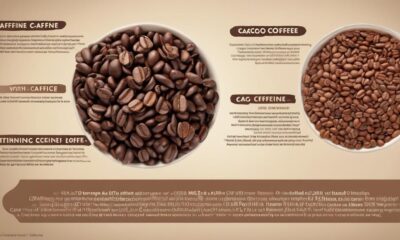
 Raw Food Ingredients4 weeks ago
Raw Food Ingredients4 weeks agoThe Truth Behind the Cacao Caffeine Myth
-

 Raw Food Ingredients2 months ago
Raw Food Ingredients2 months agoWhen Fasting Can I Drink Coffee With Raw Cacao Powder
-

 What is Raw Food?2 weeks ago
What is Raw Food?2 weeks agoHow To Store Raw And Cooked Food Separately
-

 Raw Food Ingredients2 months ago
Raw Food Ingredients2 months agoHow To Use Raw Cacao Beans




